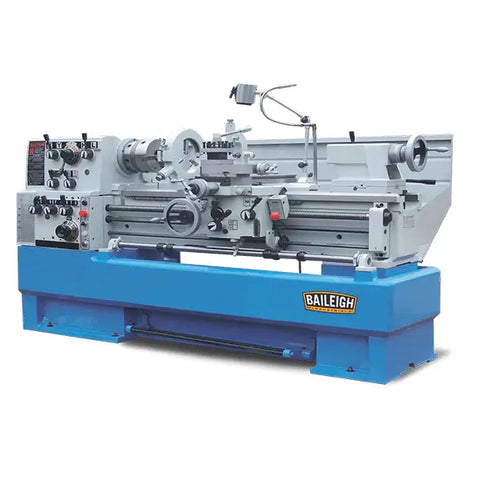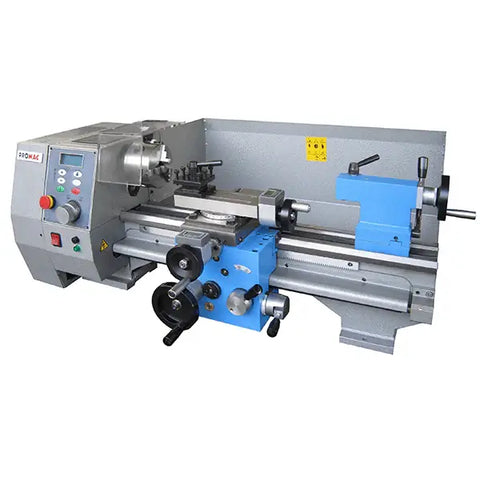
Lathe RPM Guide: How Fast Do Lathes Spin
In this section, we will explore the speed at which lathes spin and how it affects the performance and precision of turning projects. Understanding the optimal lathe speed, also known as RPM (Revolutions Per Minute), is essential for achieving desired results.

Key Takeaways:
- Lathe speed, or RPM, is crucial for achieving excellent results in turning projects.
- The speed at which lathes spin depends on various factors, including the type of material being turned, the size and shape of the workpiece, and the cutting tool being used.
- By considering these factors, you can determine the optimal lathe speed for your specific turning project.
- Calculating the appropriate lathe speed based on the diameter of the workpiece, the type of material, and the desired cutting speed is important for efficient and accurate turning operations.
- Always prioritize safety and precision when adjusting lathe RPM.
Factors Affecting Lathe Speed
The speed at which lathes spin depends on various factors. In this section, we will discuss the key factors that influence lathe speed, enabling you to determine the optimal turning speed for your specific project. These factors include:
- Type of Material: Different materials require different lathe spindle rotations for optimal results. Harder materials may necessitate lower-speed lathe cutting to prevent excessive heat buildup and maintain precision, while softer materials may permit higher-speed lathe operations.
- Size and Shape of the Workpiece: The dimensions and geometry of the workpiece play a crucial role in determining the appropriate lathe speed. Larger workpieces often require slower turning speeds to ensure stability and accuracy, while smaller workpieces may be suitable for higher-speed rotations.
- Cutting Tool: The choice of cutting tool also affects the optimal lathe speed. Different cutting tools have their own recommended spindle rotations for efficient cutting and chip evacuation. Taking into account the cutting tool's design, material, and specifications will help in determining the ideal lathe speed.
By considering these factors and finding the right balance, you can achieve an optimal lathe speed that maximizes efficiency, precision, and surface finish quality for your turning projects.
| Factor | Effect |
|---|---|
| Type of Material | Harder materials require lower lathe speeds to prevent heat buildup. |
| Size and Shape of the Workpiece | Larger workpieces may need slower lathe rotations for stability and accuracy. |
| Cutting Tool | Different cutting tools have specific spindle rotation recommendations for efficient cutting. |
Determining the Optimal Lathe Speed
Once you have a good understanding of the factors that influence lathe speed, you can effectively determine the optimal RPM (Revolutions Per Minute) for your lathe. By calculating the appropriate lathe speed based on the diameter of the workpiece, the material type, and the desired cutting speed, you can ensure efficient and accurate turning operations.

Guidelines for Calculating Lathe Speed
Follow the guidelines below to calculate the optimal lathe speed:
- Measure the diameter of the workpiece. Use a caliper or a ruler to obtain an accurate measurement in millimeters (mm).
- Identify the material type. Different materials require different lathe speeds for optimal cutting performance. Refer to the manufacturer's recommendations or consult a lathe speed reference chart for guidance.
- Determine the desired cutting speed. This is the speed at which the cutting tool should traverse the workpiece surface. Cutting speeds are typically specified in meters per minute (m/min).
- Use the following formula to calculate the lathe speed in RPM:
Lathe Speed (RPM) = (Cutting Speed x 1000) / (π x Workpiece Diameter)
Where:
- Cutting Speed: The desired cutting speed in meters per minute (m/min).
- Workpiece Diameter: The diameter of the workpiece in millimeters (mm).
- π: The mathematical constant pi (approximately 3.14159).
An Example Calculation
Let's say you have a workpiece with a diameter of 80mm, and you want to achieve a cutting speed of 200m/min. Plugging these values into the formula:
Lathe Speed (RPM) = (200 x 1000) / (3.14159 x 80)
After performing the calculation, the optimal lathe speed would be approximately 797 RPM.
By accurately calculating the optimal lathe speed, you can achieve efficient material removal, reduce tool wear, and produce high-quality turning results. Remember to always prioritize safety when adjusting lathe speeds and make gradual adjustments to avoid excessive vibration or other adverse effects.

Conclusion
Understanding the optimal lathe speed, also known as RPM (Revolutions Per Minute), is crucial for achieving excellent results in turning projects. By considering factors such as material type, workpiece size, and cutting tool, you can calculate the appropriate lathe speed and ensure efficient and accurate operations.
When adjusting lathe RPM, always prioritize safety and precision. By following guidelines and formulas based on the diameter of the workpiece, the type of material, and the desired cutting speed, you can achieve the optimal lathe speed for your specific project.
With a comprehensive understanding of lathe speed, you can confidently undertake your turning projects with optimal performance. Remember to always refer to the recommended lathe RPM range specified by the manufacturer for the best results.

